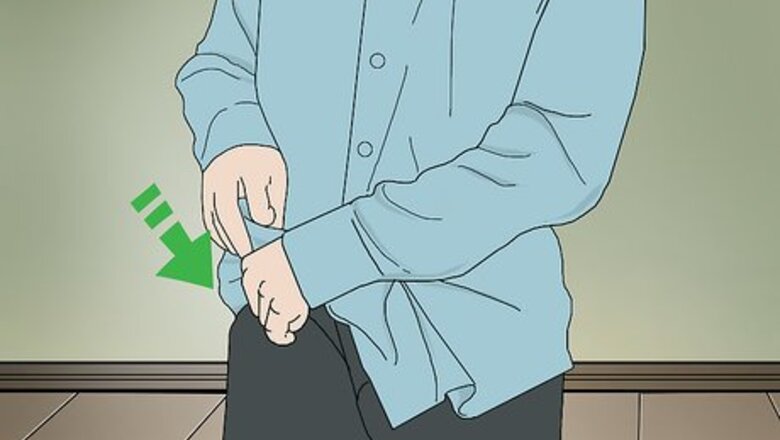
views
Switching to a Military Tuck
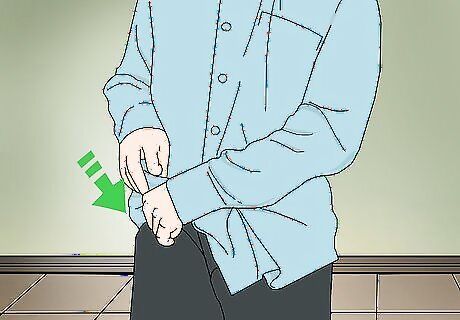
Tuck your shirt in like normal. Starting with your pants unbuttoned, push the tail of the shirt down into your waistband. Make sure it’s straight and fully extended so there are no wrinkles. You want to start with as crisp and clean a foundation as possible. The military tuck will work best with a shirt that reaches at least 3–4 inches (7.6–10.2 cm) below your waistband. Zipping your pants halfway up (but not buttoning them just yet) may help hold the shirt in place while you carry out the next few steps.
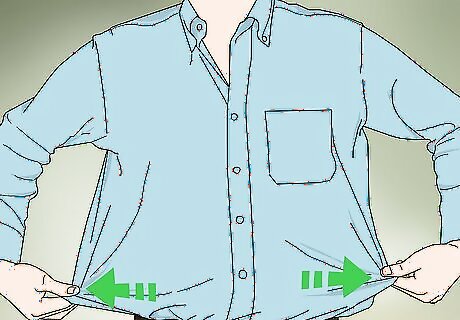
Grip the excess fabric on the sides of the shirt. Pinch the material between your thumb and forefinger just above your waistline. This will create a small dimple on either side of the fold. The place where you fingers meet will determine how much extra room you have in the shirt. Hold the fabric so that it sits close to your body, but not so snug that it pulls.
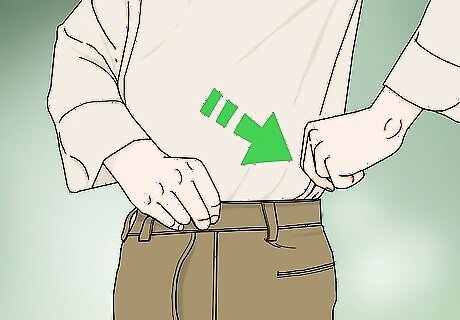
Fold the excess fabric back on itself. Pull the material towards your back pockets so that it neatly overlaps the rest of the shirt. Try not to let the shirt tail crinkle or bunch up—the fold should lay perfectly flat in one piece. It may be easier (and tidier) to pinch and fold the sides of your shirt one at a time so you can use both hands. The crease created by the fold will just barely be visible above your belt, and will be hidden altogether when you have your arms down at your sides.
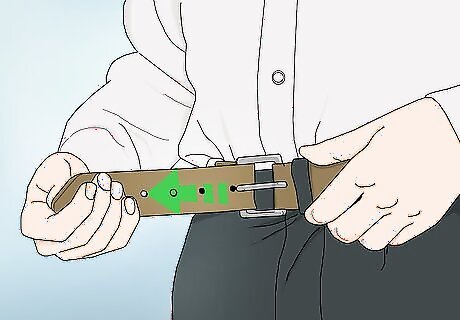
Tighten your belt around the shirt. Finish zipping and buttoning your pants like normal. Then, cinch the belt down nice and snug to hold your carefully-arranged shirt tail in place. Use the palm of your hand to gently work out any wrinkles in the fabric around your waistline. Avoid tugging at the shirt once it’s tucked. This is likely to just make imperfections worse. The military tuck is typically tight enough to keep a wayward shirt tail in place throughout the day.
Clipping on Shirt Stays
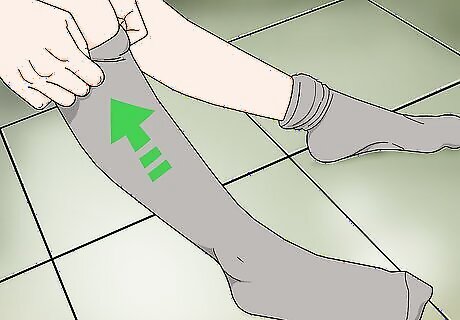
Put on your dress shirt and socks. Pull your socks up all the way up so that they sit just below your knees, and button the shirt from the bottom so that it’s ready to tuck in. These two garments will provide the base for the shirt stays—the rest of your ensemble can stay in the drawer for now. Shirt stays resemble miniature suspenders. The two-armed end is designed to hold the bottom edge of a dress shirt, while the longer end runs down to your socks.
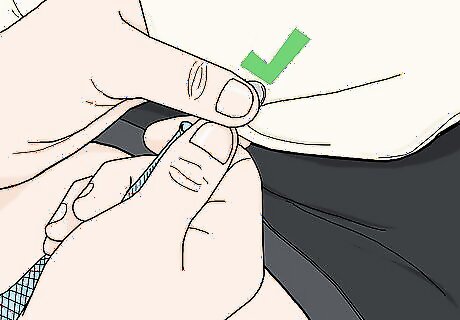
Attach one end of the shirt stays to the bottom of the shirt. Fasten the two small clips on the “Y” end of the stay to the shirt’s hem about 5 inches (13 cm) apart. Do the same on the opposite side. The shorter straps should rest on either side of your hip bones, with the longer strap reaching down the length of your leg. If your shirt stays have sliding clips, make sure the button side is inserted all the way into the metal frame. Give the clip a light tug to test whether it's secure. Be careful not to let the fabric of the shirt bunch up between the straps.
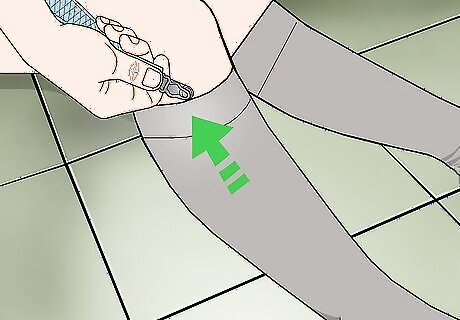
Secure the other clip to the top of your sock. Pull the longer straps down and fasten them on the outsides of your legs. The stays will cause your shirt tail and socks to pull towards each other, creating a little tension in both directions. Not only will this keep your shirt from riding up, it will also keep your socks from falling down! If you find that the clips keep slipping off your socks, try folding the tops of the socks down about an inch to create a sturdier anchor point. Shirt stays tend to be a one-size-fits-all accessory, so anyone can wear them with confidence. However, you may need to shop around for stays with adjustable straps if you’re well above average height or have particularly long legs.
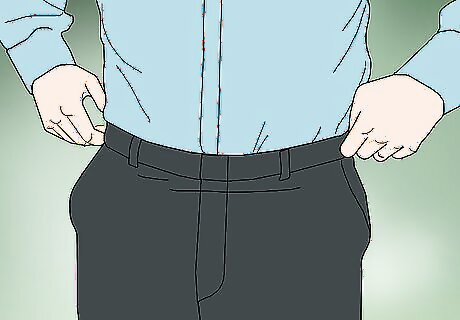
Finish getting dressed. Pull your pants on over your shirt, then button and belt them. Make any last-minute adjustments to the fabric around your waistline as needed. Your shirt should stay tucked in while you get the rest of your outfit together, and throughout your busy afternoon. Move around a little to test your range of motion. Every time you bend or lift your arms, the stays will draw your shirt tail right back into place. When worn correctly, shirt stays should be comfortable, unobtrusive, and invisible. Keep in mind that it may be necessary to unclip your shirt stays when it comes time to use the restroom.
Trying Other Useful Tricks
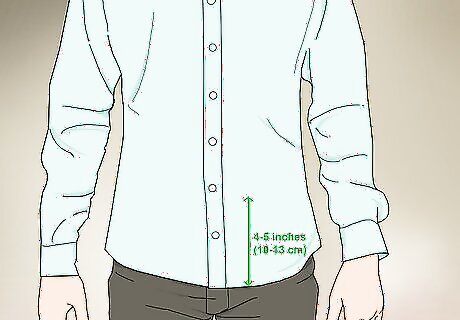
Buy your shirts a little long. When you’re trying on dress shirts, make sure the hem comes down at least 4–5 inches (10–13 cm) past your natural waistline. For the cleanest appearance, the endpoint should be right around your wrists when your arms are at your sides. Longer shirts may still bunch up a bit as you move around, but they won’t come totally untucked the way shorter ones will. Dress shirts with size guides like “fitted” and “modern cut” tend to wear longer than traditional style. If you usually have your shirts custom-tailored, specify the exact length that works best for you by stretching a tape measure from the base of your neck to the point you want the shirt tails to reach.
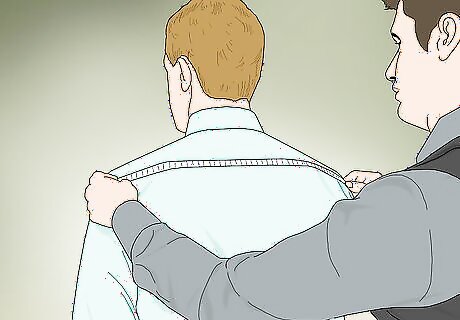
Have your shirts tailored. Take your baggy, oversized dress shirts to an alterations specialist and have them take in the measurements a few inches. With less material around the truck and waistline, it won’t be as noticeable when the shirt comes untucked over time. Getting your shirts tailored is a cheap fix. In most shops, it shouldn’t cost you more than $10-20 per shirt. The most common cause of ruffling, bunching, and wrinkling is simply wearing a shirt that’s too big.
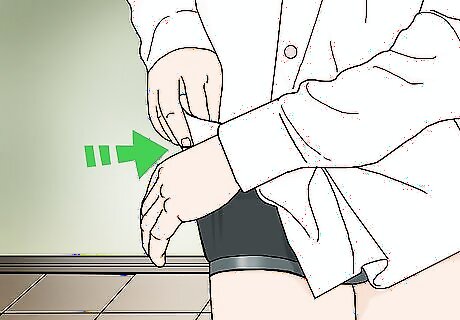
Tuck your undershirt into your underwear. Sometimes, it’s a rebellious undershirt that causes a dress shirt to ride up, rather than the cut or material. You can correct this issue by slipping the hem of your t-shirt or tank top into the waistband of your underwear. The outer shirt will be less prone to drifting if the inner one isn’t going anywhere. Stuffing your undershirt into your underwear may feel a little odd at first, but after a few wears you won’t be able to tell the difference.
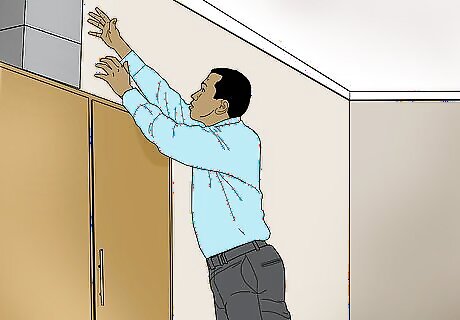
Be mindful of the way you’re moving. Not all movement can be avoided, but if you can be more conscious of the way you’re twisting, turning, and reaching, your carefully-coordinated look has a shot at making it past lunchtime. Resist the urge to stretch too tall or rest your hands behind your head when you’re thinking. Remember that the higher your arms go, the higher your hem goes as a result. Avoid bending at the waist as much as possible. Leaning too far in any direction will yank your shirt tails right out your pants.
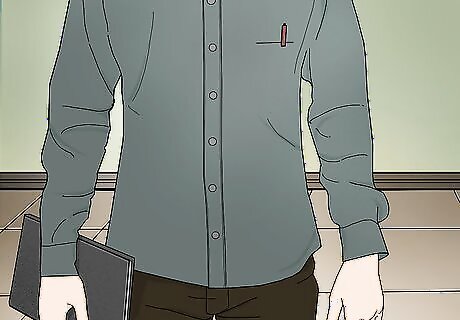
Switch to a style you can wear untucked. If you're still not having any luck keeping your shirt tails from escaping, it may be time to go shopping. In particular, look for modern cuts with streamlined hems that are designed to be worn in or outside the waistband. One of these styles might make a fashionable substitute to the kind of shirts you're used to wearing, particularly when sported in a business-casual setting. The hem of your shirt should ideally hit right around the middle of your back pocket, or just below your zipper. When wearing a dress shirt untucked, it's usually acceptable to leave the top 1 or 2 buttons undone.














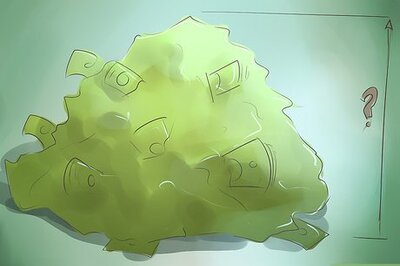





Comments
0 comment